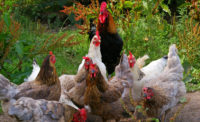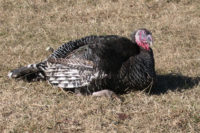TECH FLASH
Bird flu flies east to commercial poultry farms
Confirmed cases were found this month at four commercial turkey farms within the Mississippi flyway.

The initial case of highly pathogenic avian influenza (HPAI) was reported in December of last year at an Oregon farm. Earlier this year, the first case at a commercial farm was detected at a poultry farm in California. Since then, the disease has appeared at an additional five commercial poultry farms.
Reported cases of HPAI in the US initially appeared to be restricted to the Pacific region of the country, but it has made its way east this month, with confirmed cases at four commercial turkey farms in Missouri, Minnesota and Arkansas. In all, 14 flocks have been infected in the US since December 2014.News of the outbreaks has prompted dozens of countries, including those in the European Union and China, to ban poultry imports from the Pacific Northwest.
US government agencies stress there is no immediate public health concern, but considers these reports to be part of an ongoing avian influenza disease incident. Officials state that while avian influenza is lethal to birds, no human cases of these viruses have been detected in the US or Canada or internationally.
The Missouri Department of Agriculture (MDA) confirmed last week that avian influenza had infected birds at a second turkey farm in the state. Just one day earlier, state officials announced that turkeys at a grower facility with a commercial turkey flock of 30,100 had been infected with H5N2 avian influenza. MDA is working with USDA, along with state health officials and industry partners, to coordinate a response. According to USDA’s National Veterinary Services Laboratory (NVSL), these incidents mark the first time H5N2 had been detected in Missouri.
Following protocols, both Missouri facilities were immediately quarantined. The involved flocks will be depopulated, and none of the turkeys will not enter the food system. Following USDA protocols, surveillance and testing procedures are underway at properties near the affected facilities to ensure the virus has not spread.
The nation’s poultry industry is assuring the public that it has detailed response plans in place for controlling the spread of the virus and eliminating it in its entirety. “The US government and poultry industries have sophisticated systems and techniques to detect the introduction of the virus into a commercial poultry flock and have proven methods to quickly eliminate the virus,” says a joint statement released by members in the poultry industry.
The U.S. Poultry and Egg Association, National Chicken Council, National Turkey Federation, United Egg Producers and the USA Poultry and Egg Export Council say the industry has strong testing and detection programs in place that are administered by the federal National Poultry Improvement plan, in addition to individual state response plans. “The network of state and federal agencies, working in conjunction with the poultry industry, has already executed procedures to quarantine any affected flock and reduce the impact of these instances,” the associations wrote. “None of birds from the affected flocks are viable for sale and have not entered the food chain.”
More information on the disease and updates from USDA can be found here.
Looking for a reprint of this article?
From high-res PDFs to custom plaques, order your copy today!








